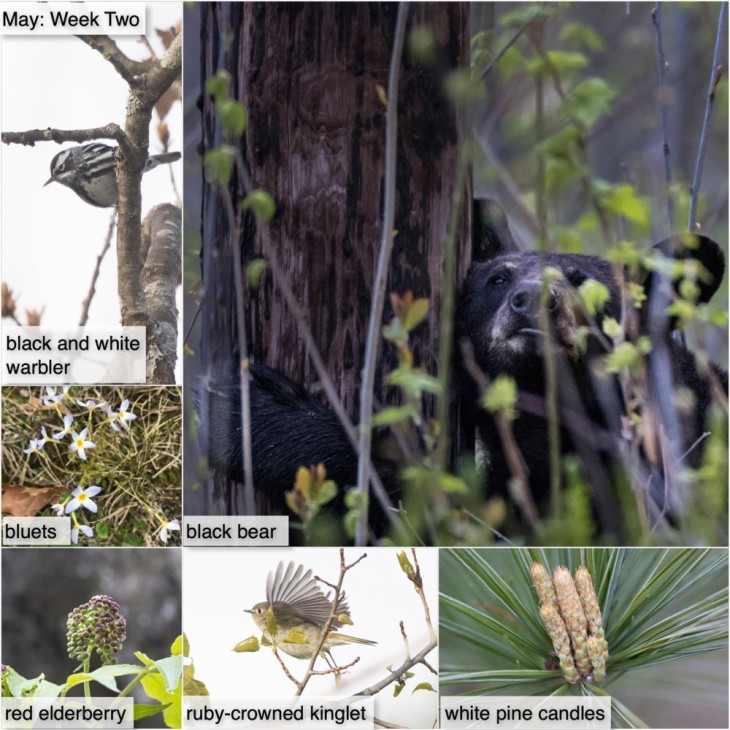This Week in the Woods, we begin with an announcement: if you were out jogging in Lyme this past Friday morning, and you saw a guy in a car aiming a camera in your direction, don’t worry. He wasn’t photographing you. He was photographing the bear behind you.
If this sounds scary, it isn’t. Black bears often pass close by without people noticing them. They aren’t aggressive, and they typically want nothing to do with humans. The exception is when these highly intelligent and adaptable animals have learned to see houses as sources of easy food – for example, because of un-electrified chicken coops, unsecured garbage, and summer birdfeeders.
This photograph by Tig Tillinghast shows a black bear standing on its back legs to hug and rub its head against a telephone pole. It later licked the pole. This was all likely part of scent marking behavior. Bears have a remarkably keen sense of smell, and have complex social interactions with each other. One of the ways they manage these relationships is by posting and receiving scent on trees and other woody surfaces. To learn more about black bears, check out the Kilham Bear Center website.
Here are some other observations from the past few days:
This is such a great time to see birds, before summer leaves fully emerge. We’ve seen a number of black and white warblers this week, scampering up and down the branches of oaks and other trees. They’re hunting insects, and if you observe them for a while, you’re likely to see them dip their beaks into bark crevices. According to their profile on Cornell’s All About Birds website, black and white warblers are some of the first migrant warblers to return from their wintering grounds.
We were pleasantly surprised to find bluets, also called Quaker ladies, cropping up as volunteers in a lawn. These tough little plants will bloom from now into summer, and they’re pleasingly unfussy, tolerating a variety of soil conditions.
Red elderberry flower buds were purple when they first emerged in April, but as they open, they transition into clusters of frothy white blooms. Large specimens of this shrub often have buds at different levels of emergence, and now is a good time to see buds next to each other, at different stages of development. In summer, red elderberries produce delicious looking red berries – alas, these berries are toxic to humans, but many wildlife species consume them.
Is this bird in flight another warbler? Nope – it’s a ruby-crowned kinglet. These kinetic little birds nest high up in trees, but they often glean insects in lower branches, and this one was hopping around a young aspen, and sing its heart out. Note – the “ruby crowns” are bright red feathers on the male birds’ heads, that are concealed, most of the time, under duller plumage.
White pine buds, or “candles” are lengthening. This new growth get confused sometimes for pollen cones, but if you keep watch as May progresses, you’ll see fascicles (bundles) of light green needles growing out at an angle from newly revealed, woody stems.
What have you noticed in the woods this week? Submit a recent photo for possible inclusion in our monthly online Reader Photo Gallery.


